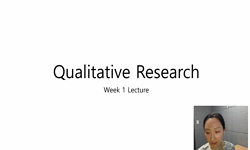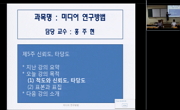본 논문은 한국의 민족운동사 연구가 독립운동과 밀접하게 진행되어온 전통적 접근을 재검토하며, 민족운동사의 개념과 범위를 보다 폭넓게이해하기 위한 다양한 방법을 모색하였다. 연구 ...
http://chineseinput.net/에서 pinyin(병음)방식으로 중국어를 변환할 수 있습니다.
변환된 중국어를 복사하여 사용하시면 됩니다.
- 中文 을 입력하시려면 zhongwen을 입력하시고 space를누르시면됩니다.
- 北京 을 입력하시려면 beijing을 입력하시고 space를 누르시면 됩니다.

다양한 민족운동사 연구를 위하여 - 민족운동사 연구 경향과 전망 - = Towards a Diverse Study of the History of National Movements - Trends and Prospects in the Study of National Movements -
한글로보기부가정보
국문 초록 (Abstract)
첫 번째로, 메타분석을 통해 민족운동사 연구의 주요 성과와 한계를 재평가하고, 새로운 연구 방법론을 도입할 필요성을 강조하였다. 특히, 3·1 운동 연구 사례를 중심으로 다양한 분석적 접근을 통해 민족운동사를 폭넓게 조망할 수 있음을 제시하고 이를 통해 민족운동과 독립운동을 상호포괄적 관계로 재조명하여, 독립운동에 국한된 연구의 한계를 넘어 더 광범위한 민족운동 연구로 확장하려는 시도가 필요함을 역설하였다.
두 번째로, 민족운동사의 시기적·공간적 확장을 제안하며, 일제강점기에 집중된 기존 연구에서 해방 후의 국가 건설과 사회 변동을 포함하는연구로 전환하는 방법을 제안하였다. 특히, 동아시아 및 세계 각지에서이루어진 민족운동과의 연대와 교류를 탐구함으로써 민족운동이 단순한국내 저항 활동에 그치지 않고 국제적 저항의 일환으로 수행되었음을 살펴보았다. 이와 함께 사회, 경제, 정치적 맥락 속에서 민족운동의 다각적의미를 살펴보는 것이 중요성을 언급하였다.
세 번째로, 논문은 융복합적 연구의 필요성을 강조하며 디지털 인문학을 활용한 방법론의 도입을 제안하였다. 텍스트 마이닝이나 GIS(지리정보 시스템)와 같은 디지털 도구를 통해 민족운동사의 구조적 관계와 공간적 변화 양상을 시각적으로 분석함으로써 자료 접근성과 연구 효율성을높일 수 있음을 주장하고 특히, 디지털 아카이브와 공공역사의 접근을 통해 대중과의 소통을 강화해야한다는 점을 조명하였다.
본 논문은 한국의 민족운동사 연구가 독립운동과 밀접하게 진행되어온 전통적 접근을 재검토하며, 민족운동사의 개념과 범위를 보다 폭넓게이해하기 위한 다양한 방법을 모색하였다. 연구 방법으로 민족운동을 단순히 독립운동의 일부로 간주하는 기존의 이분법적 시각에서 벗어나기위해, 메타분석, 시기적·공간적 확장, 그리고 융복합적 접근이라는 세 가지 연구 방향을 제안하였다.
첫 번째로, 메타분석을 통해 민족운동사 연구의 주요 성과와 한계를 재평가하고, 새로운 연구 방법론을 도입할 필요성을 강조하였다. 특히, 3·1 운동 연구 사례를 중심으로 다양한 분석적 접근을 통해 민족운동사를 폭넓게 조망할 수 있음을 제시하고 이를 통해 민족운동과 독립운동을 상호포괄적 관계로 재조명하여, 독립운동에 국한된 연구의 한계를 넘어 더 광범위한 민족운동 연구로 확장하려는 시도가 필요함을 역설하였다.
두 번째로, 민족운동사의 시기적·공간적 확장을 제안하며, 일제강점기에 집중된 기존 연구에서 해방 후의 국가 건설과 사회 변동을 포함하는연구로 전환하는 방법을 제안하였다. 특히, 동아시아 및 세계 각지에서이루어진 민족운동과의 연대와 교류를 탐구함으로써 민족운동이 단순한국내 저항 활동에 그치지 않고 국제적 저항의 일환으로 수행되었음을 살펴보았다. 이와 함께 사회, 경제, 정치적 맥락 속에서 민족운동의 다각적의미를 살펴보는 것이 중요성을 언급하였다.
세 번째로, 논문은 융복합적 연구의 필요성을 강조하며 디지털 인문학을 활용한 방법론의 도입을 제안하였다. 텍스트 마이닝이나 GIS(지리정보 시스템)와 같은 디지털 도구를 통해 민족운동사의 구조적 관계와 공간적 변화 양상을 시각적으로 분석함으로써 자료 접근성과 연구 효율성을높일 수 있음을 주장하고 특히, 디지털 아카이브와 공공역사의 접근을 통해 대중과의 소통을 강화해야한다는 점을 조명하였다.
다국어 초록 (Multilingual Abstract)
First, the paper emphasizes the need to re-evaluate the main achievements and limitations of national movement history research through meta-analysis and to introduce new research methodologies. By focusing on the case of the March 1st Movement, the paper demonstrates that a broad analytical approach can provide a comprehensive perspective on national movements.
This approach aims to recontextualize the relationship between national and independence movements, stressing the importance of expanding research beyond the independence movement alone.
Second, the paper suggests a temporal and spatial expansion of national movement history, moving beyond studies focused on the Japanese colonial period to include post-liberation state-building and social change. It explores solidarity and exchanges with national movements across East Asia and other parts of the world, indicating that these movements were not limited to domestic resistance but were part of broader international resistance. The paper underscores the importance of examining the diverse meanings of national movements within social, economic, and political contexts.
Third, the paper highlights the necessity of convergence research, advocating for the adoption of methodologies from digital humanities. By utilizing digital tools such as text mining and GIS (Geographic Information Systems), the study argues that the structural relationships and spatial dynamics within national movement history can be visually analyzed, enhancing data accessibility and research efficiency. Furthermore, it emphasizes the need to strengthen communication with the public through digital archives and public history initiatives.
This thesis reexamines the traditional approach in which the study of Korea's history of national movements has been closely aligned with the independence movement, seeking to broaden the concept and scope of national movement history through various ...
This thesis reexamines the traditional approach in which the study of Korea's history of national movements has been closely aligned with the independence movement, seeking to broaden the concept and scope of national movement history through various methods. To move beyond the conventional dichotomous view that treats national movements simply as part of the independence movement, the study proposes three research directions: meta-analysis, temporal and spatial expansion, and convergence research.
First, the paper emphasizes the need to re-evaluate the main achievements and limitations of national movement history research through meta-analysis and to introduce new research methodologies. By focusing on the case of the March 1st Movement, the paper demonstrates that a broad analytical approach can provide a comprehensive perspective on national movements.
This approach aims to recontextualize the relationship between national and independence movements, stressing the importance of expanding research beyond the independence movement alone.
Second, the paper suggests a temporal and spatial expansion of national movement history, moving beyond studies focused on the Japanese colonial period to include post-liberation state-building and social change. It explores solidarity and exchanges with national movements across East Asia and other parts of the world, indicating that these movements were not limited to domestic resistance but were part of broader international resistance. The paper underscores the importance of examining the diverse meanings of national movements within social, economic, and political contexts.
Third, the paper highlights the necessity of convergence research, advocating for the adoption of methodologies from digital humanities. By utilizing digital tools such as text mining and GIS (Geographic Information Systems), the study argues that the structural relationships and spatial dynamics within national movement history can be visually analyzed, enhancing data accessibility and research efficiency. Furthermore, it emphasizes the need to strengthen communication with the public through digital archives and public history initiatives.
동일학술지(권/호) 다른 논문
-
1980년대 民族運動史연구 기반의 형성과 학회 창립의 의의 - 韓國民族運動史學會의 사례를 중심으로 -
- 한국민족운동사학회
- 조범성
- 2024
- KCI등재
-
미디어 변화에 따른 대중의 민족운동 이해 관점의 변화 - 2000년대 이후 역사 영화 및 드라마를 중심으로 -
- 한국민족운동사학회
- 장민지
- 2024
- KCI등재
-
- 한국민족운동사학회
- 김은지
- 2024
- KCI등재
-
조선의용대 제2구대(지대) 豫北分隊의 華北地域 敵後活動
- 한국민족운동사학회
- 박동환
- 2024
- KCI등재




 KISS
KISS






